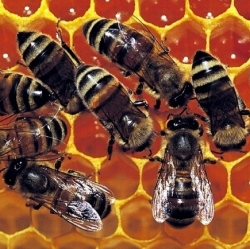
DARPA is seeking software solutions to help small drones fly better in enclosed environments. The Fast Lightweight Autonomy program, “focuses on creating a new class of algorithms to enable small, unmanned aerial vehicles to quickly navigate a labyrinth of rooms, stairways and corridors or other obstacle-filled environments without a remote pilot.”
The solicitation doesn’t focus on new drone designs so much as helping very small drones, able to fit through an open window and fly at 45 miles per hour, navigate tight and chaotic indoor spaces without having to communicate with operators, get GPS directions, or receive data from external sensors. All the thinking, steering and landing would be in the drone.
“Goshawks, for example, can fly very fast through a dense forest without smacking into a tree. Many insects, too, can dart and hover with incredible speed and precision. The goal of the FLA program is to explore non-traditional perception and autonomy methods that would give small UAVs the capacity to perform in a similar way, including an ability to easily navigate tight spaces at high speed and quickly recognize if it had already been in a room before,” Mark Micire, DARPA program manager, said in a press release.
Urban disaster relief is an “obvious” application for tiny, self-guided insect robots according to the agency. An equally obvious application, left out of the announcement, is spy drones that can fly independently into rooms, find a perch, and serve as a fly on the wall in a very real (but robotic) sense of the world. As new materials come online, researchers are quickly getter better at miniaturizing flying machines. Supposedly, the world’s smallest drone is a robofly from Harvard (DARPA funded) at 60 milligrams and 3 centimeters.
